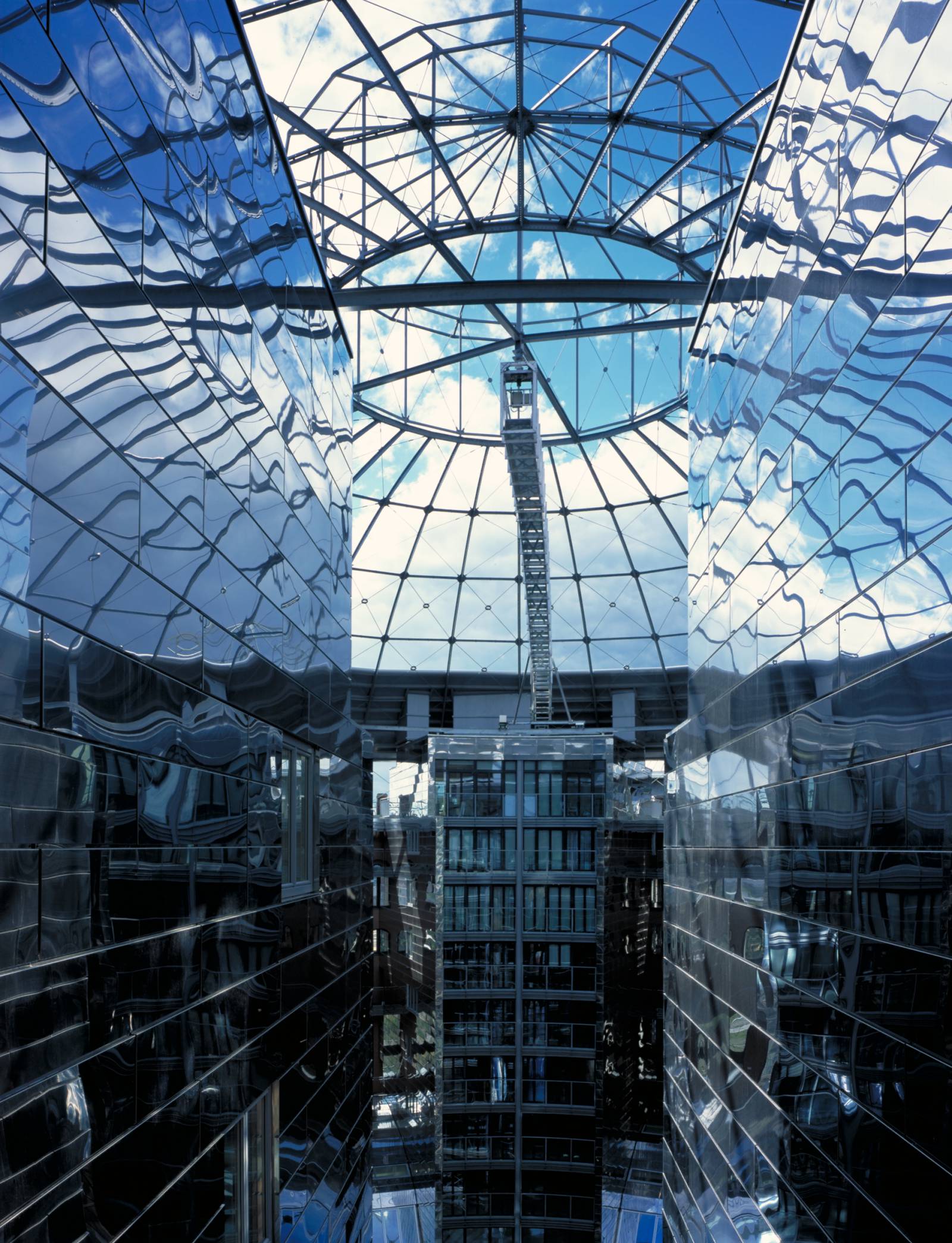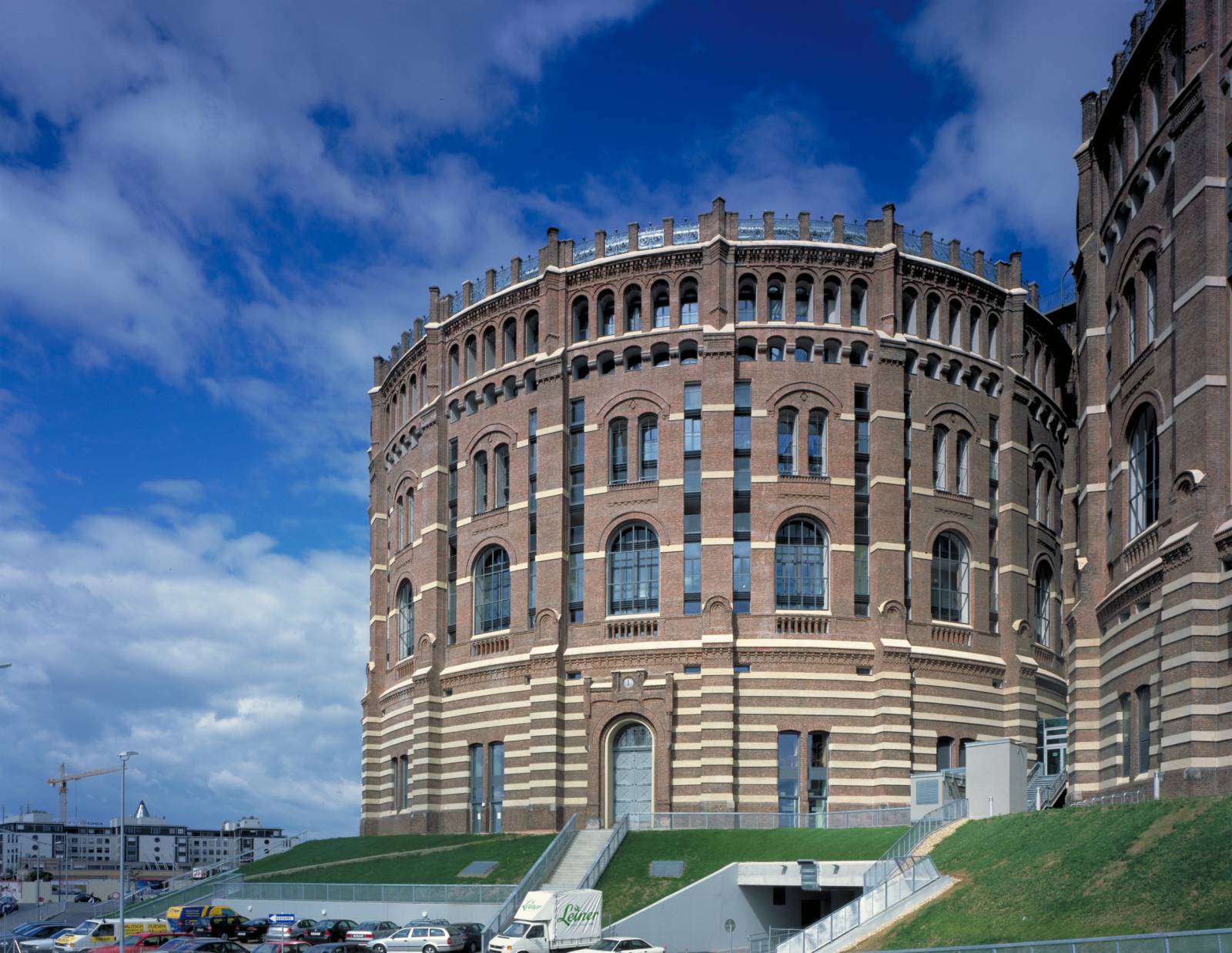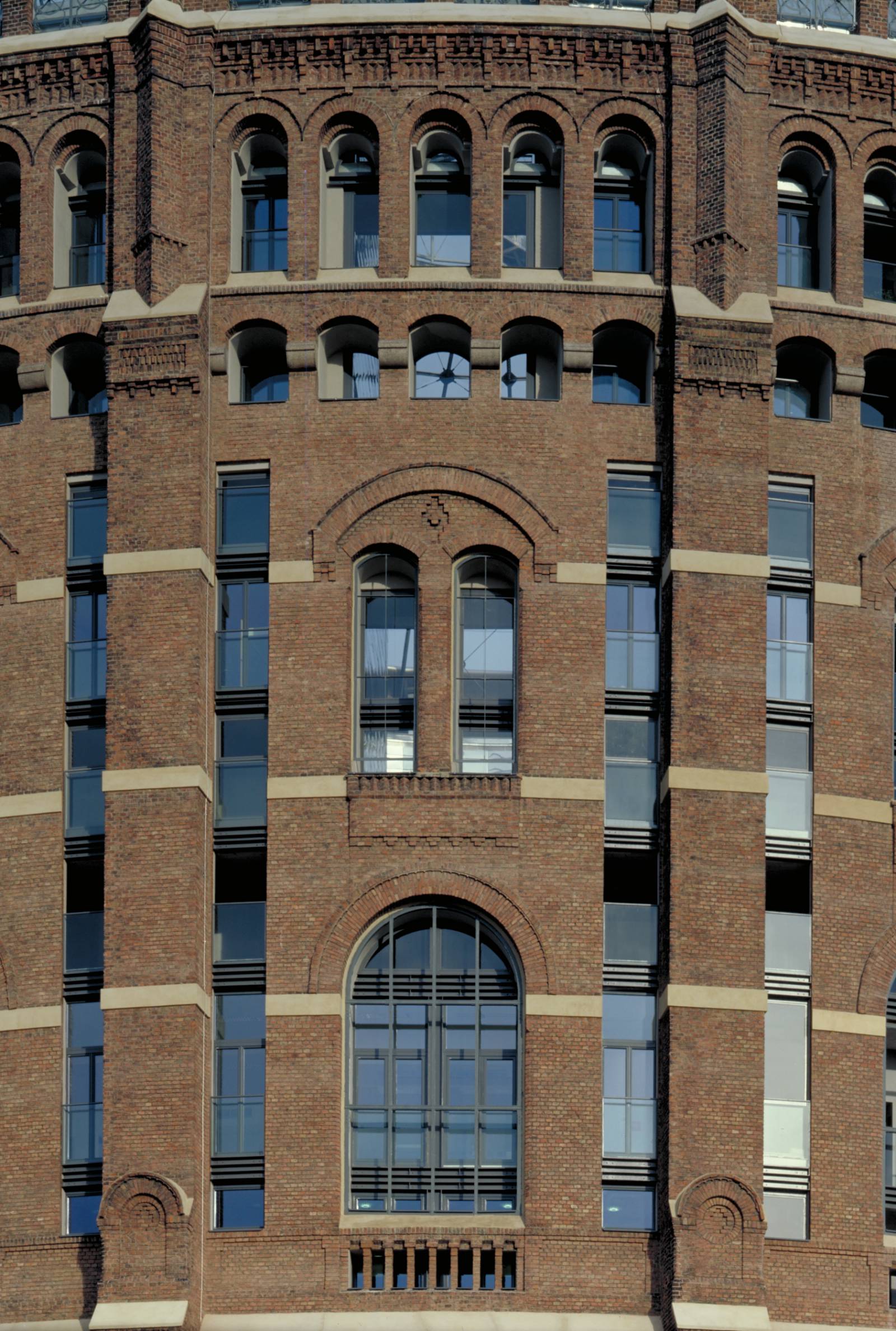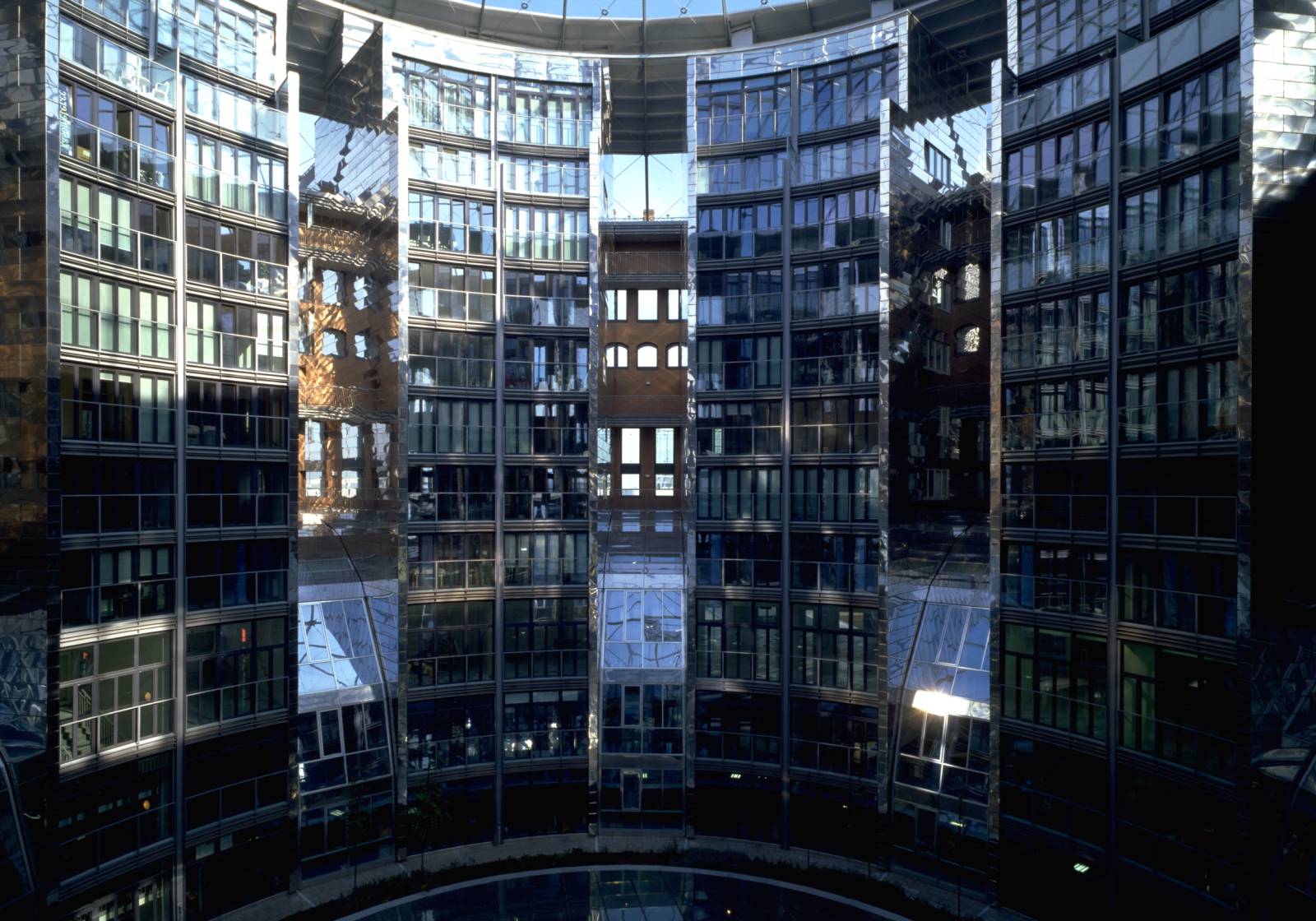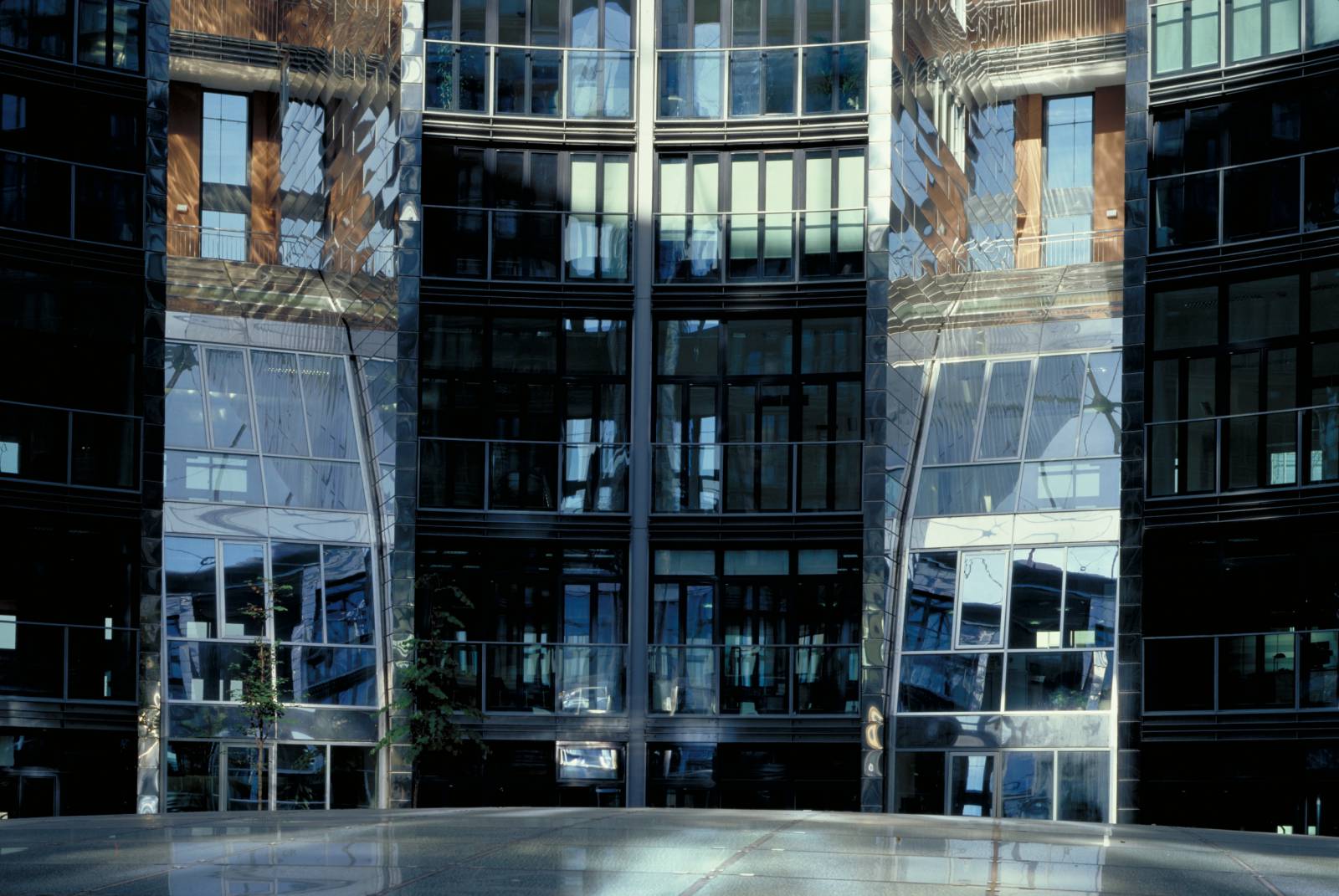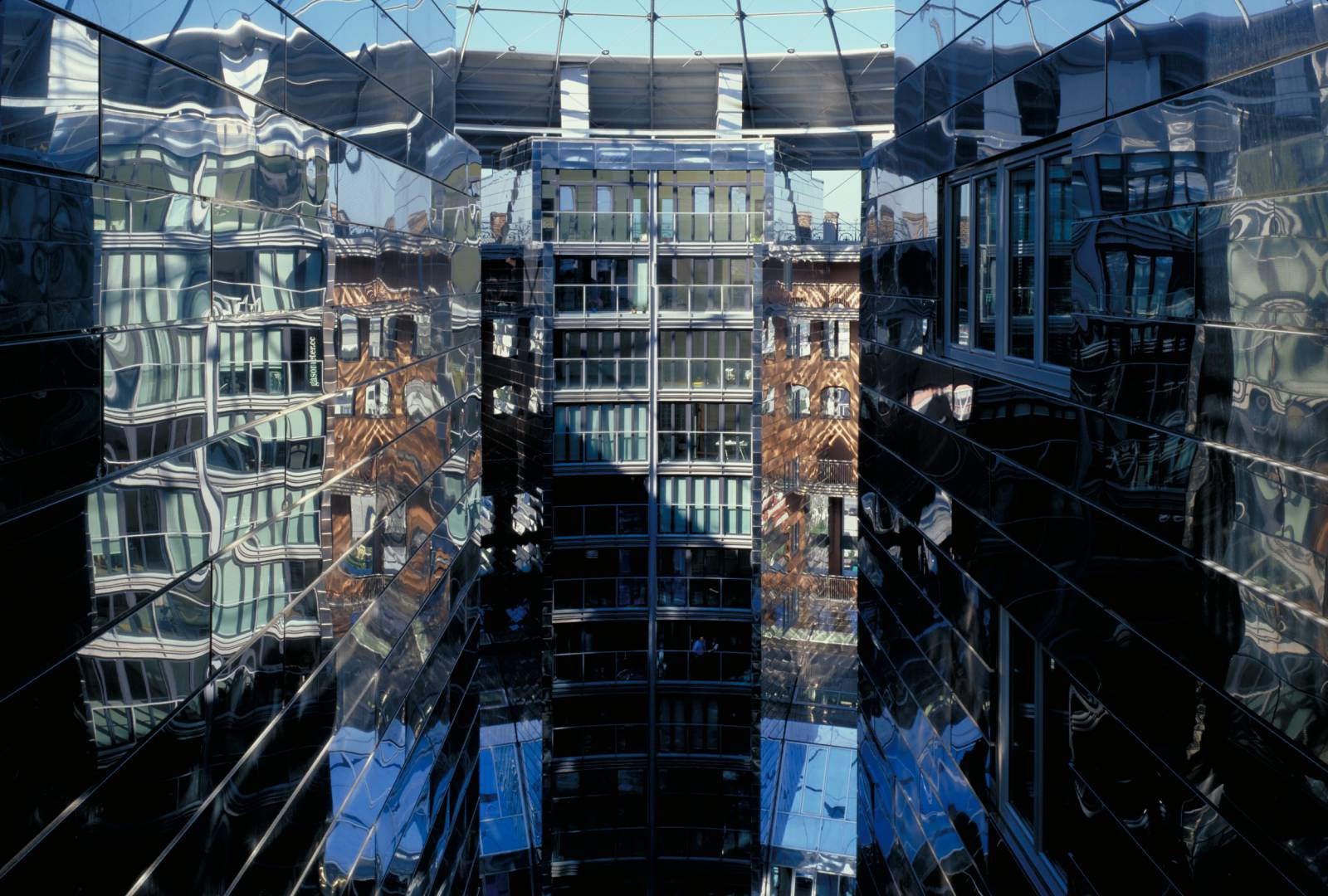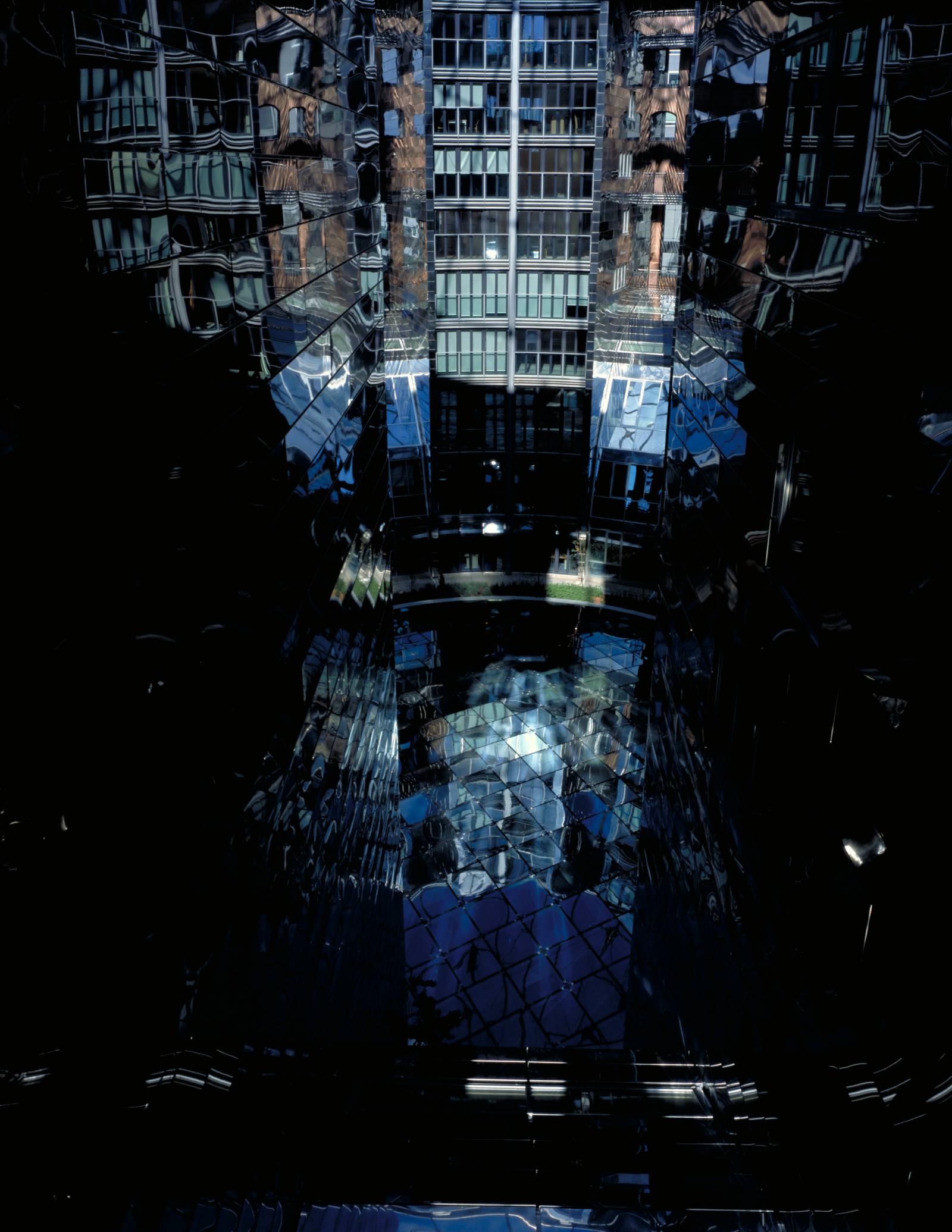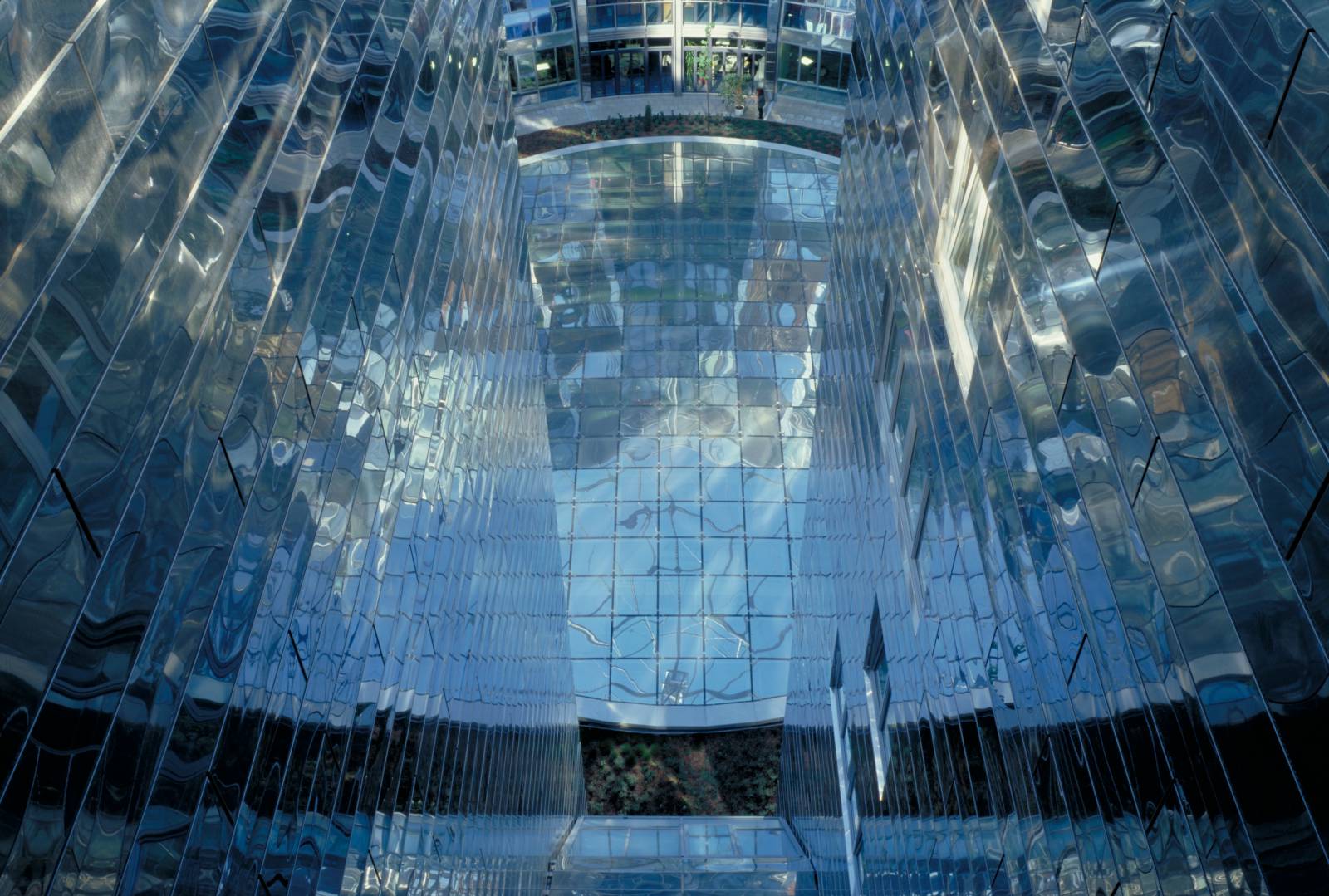- Previous project: Jussieu University Campus – Orientation and urbanization reference plan
- Next project: Gansevoort Market / Landmark Loft
Gasometer A
- Vienna, Austria
Past and Present
The Vienna gasometers were built between 1896 and 1899 at a time when societies were reluctant to exhibit freely their industrial infrastructures. Thus all four gasometers were disguised as buildings by means of enclosures of brick walls topped by glass domes. Considering their imposing silhouettes – about 62 meters inner diameter and 72 meters height – their arched windows and the detailing of their construction, one would have wondered which kind of buildings those might be. They went out of use in the mid 80’s.
The city launched a feasibility study undertaken by architect Manfred Wehdorn and the decision was made to convert the gasometers into a district with shopping facilities and housing. A competition was held and architects were chosen for the task of conversion: the local Coop-Himmelb(l)au, Manfred Wehdorn and Wilhelm Holzbauer and Jean Nouvel.
Nouvel has kept the enclosure intact as a testimony of its times and designed a series of segments – 18 at first then 9 built as they were paired for economy – which house apartments on 14 levels. These inner “buildings” are slightly detached from the original wall so as to provide for vertical accesses. The shopping center which links the four gasometers is covered here with a glass dome and surrounded by planters with grass.
The inner space is clearly the main façade: each segment has access to outside views through the windows in the brick wall either directly or across the inner space between the segments. The cladding of the sides of the segments in glass provides for a series of reflections which both questions perceptions and improves the lightness of the place. Nouvel had dreamt to reuse the existing structure to the top dome as a support for bio-climactic equipment. It never could happen. The spiderweb which frames the sky remains pure décor.
